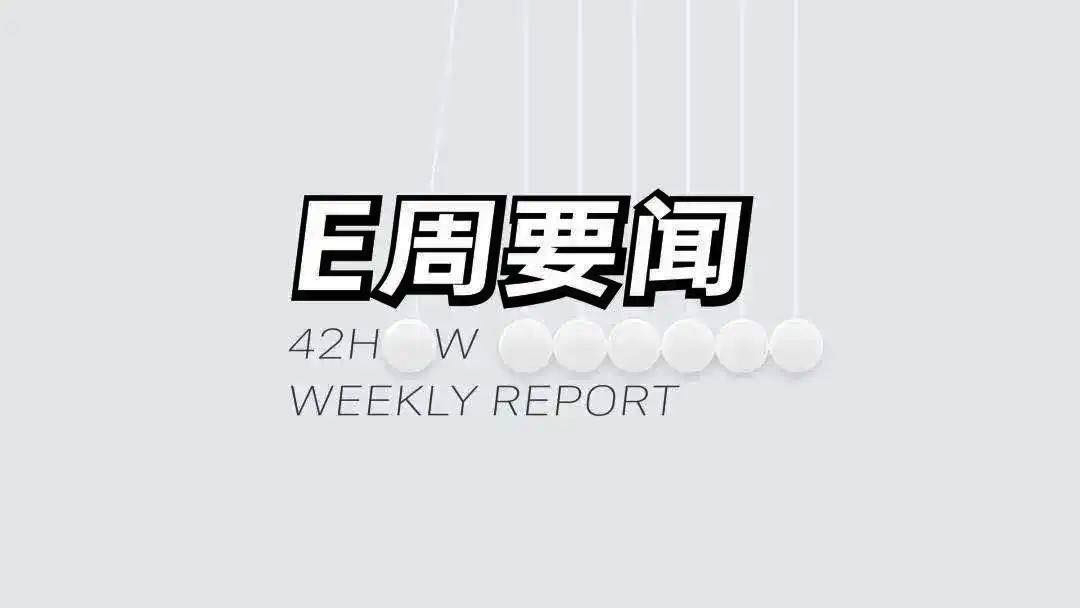Weekly Index
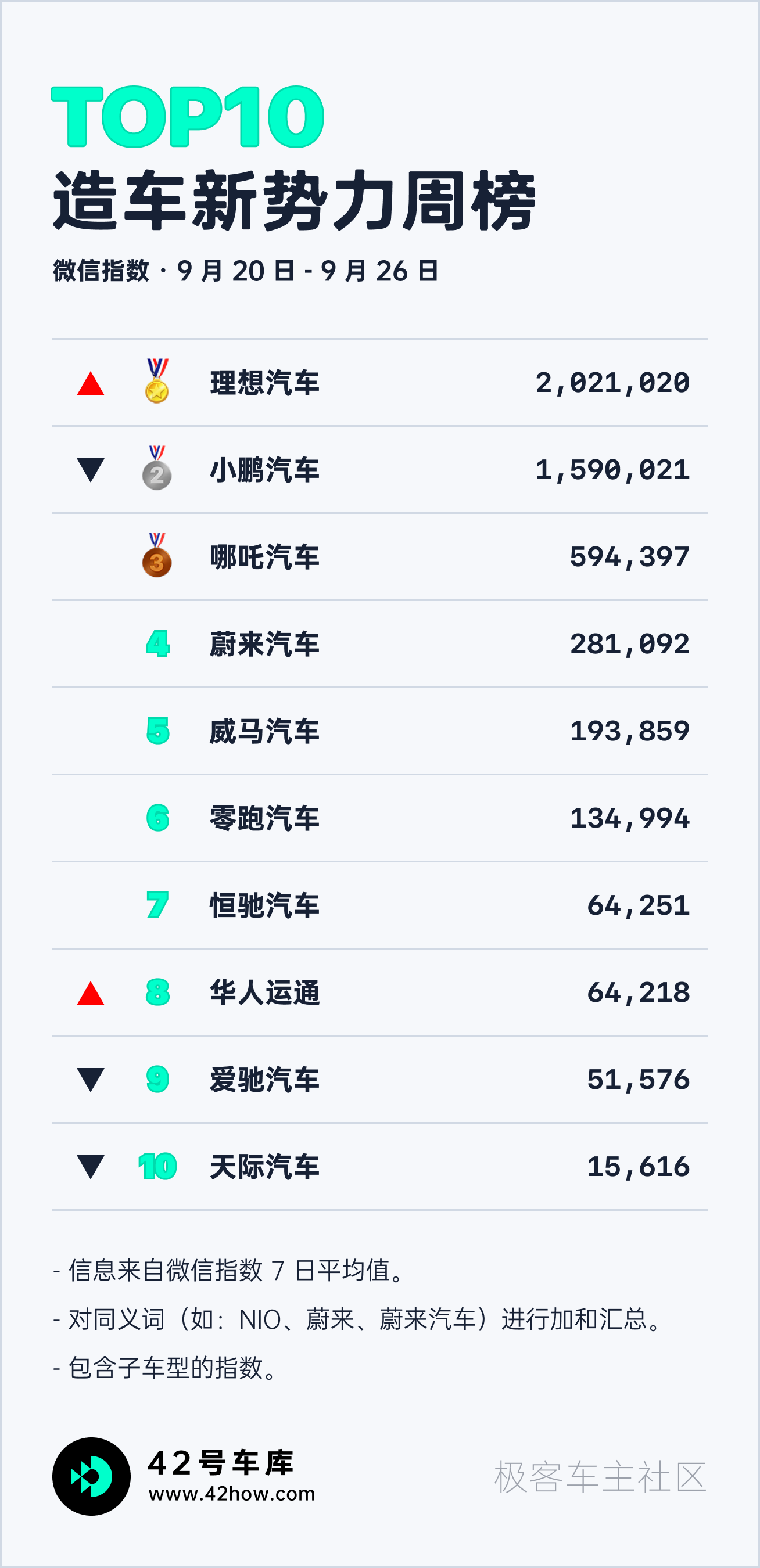
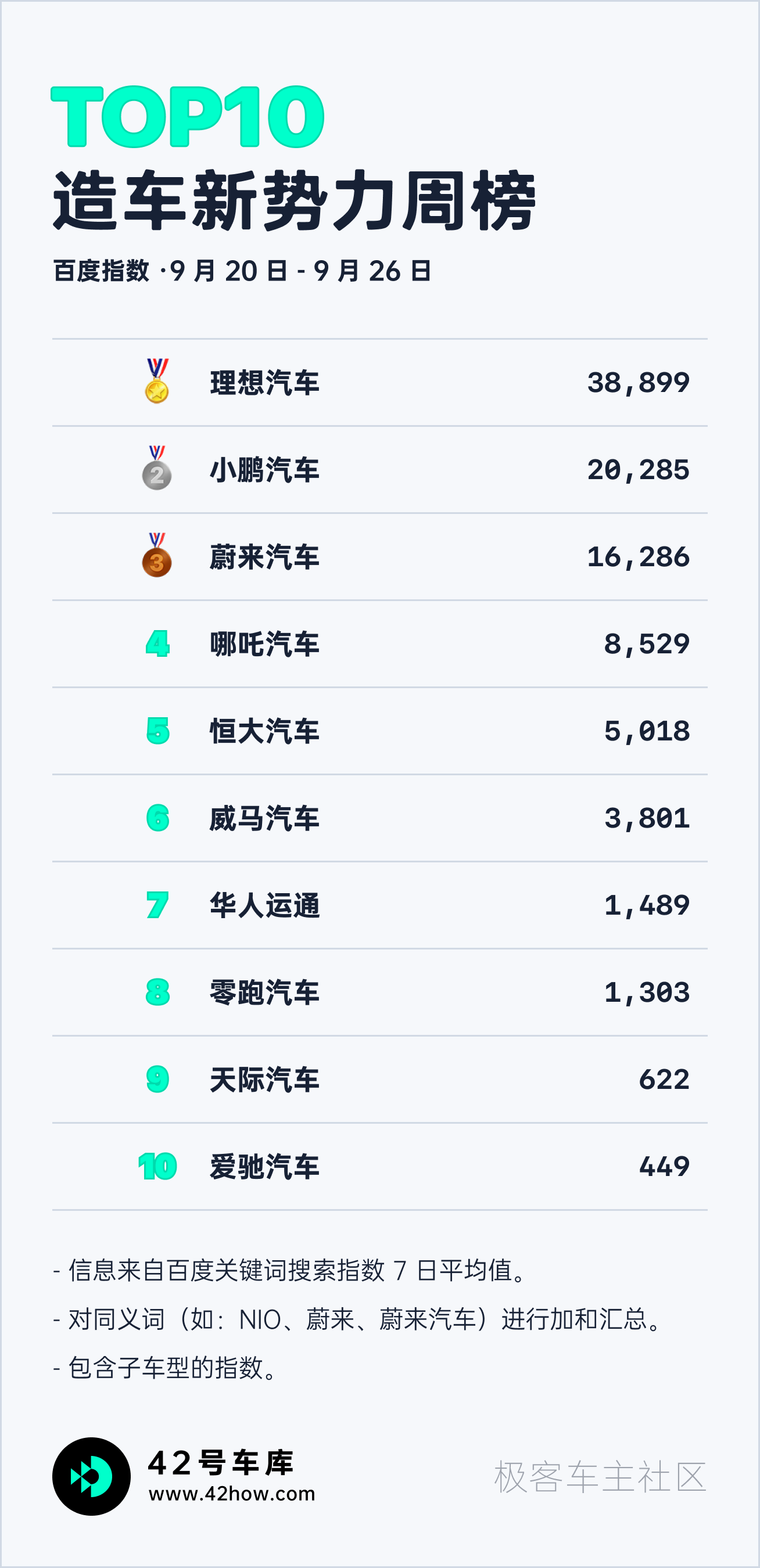
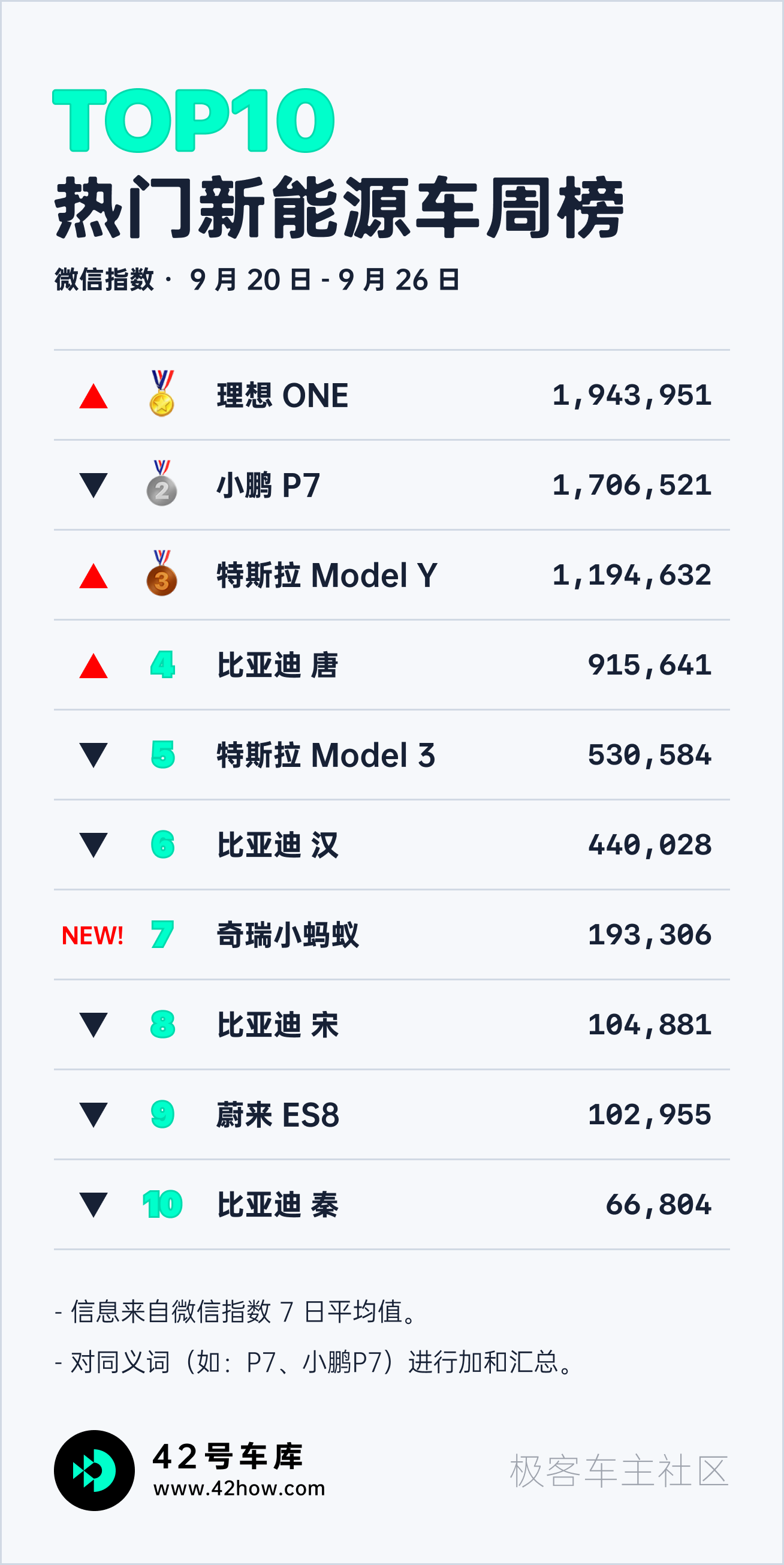

Weekly News
Huawei and BAIC deepen cooperation
On September 26th, BAIC New Energy and Huawei signed a comprehensive business cooperation agreement in Beijing. The two parties will carry out cooperation in improving cooperation management mechanisms, strengthening product development, and joint brand marketing in multiple fields. The signing of this agreement is an important decision made by BAIC and Huawei in the current wave of development of intelligent electric vehicles.
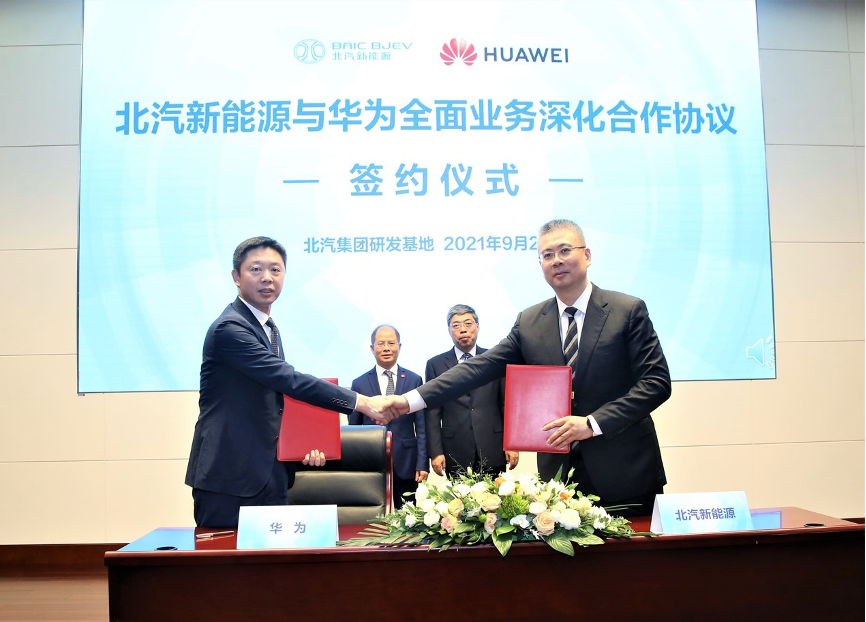
Comment:
This is another collaboration between Huawei and BAIC. The two will jointly develop HBT project products with intelligence as the breakthrough, and create the joint brand of ARCFOXxing and “HI”. The ARCFOX ARCFOXxing brand has worked with Huawei for four years and brought the world’s first mass-produced car with 3 lidars in the first half of this year – Alpha S Huawei HI version. This collaboration further opens up marketing channels. With various companies launching new retail sales models, Alpha S Huawei HI version will be sold on Huawei’s online and offline channels at the end of this year.
Tesla has established a data center in China
On September 26, at the opening ceremony of the 2021 World Internet Conference, Musk stated that Tesla has established a data center in China, and all data, including personal information, will be stored in China. Only in extremely rare cases such as needing to order overseas spare parts, can data be transferred after approval.
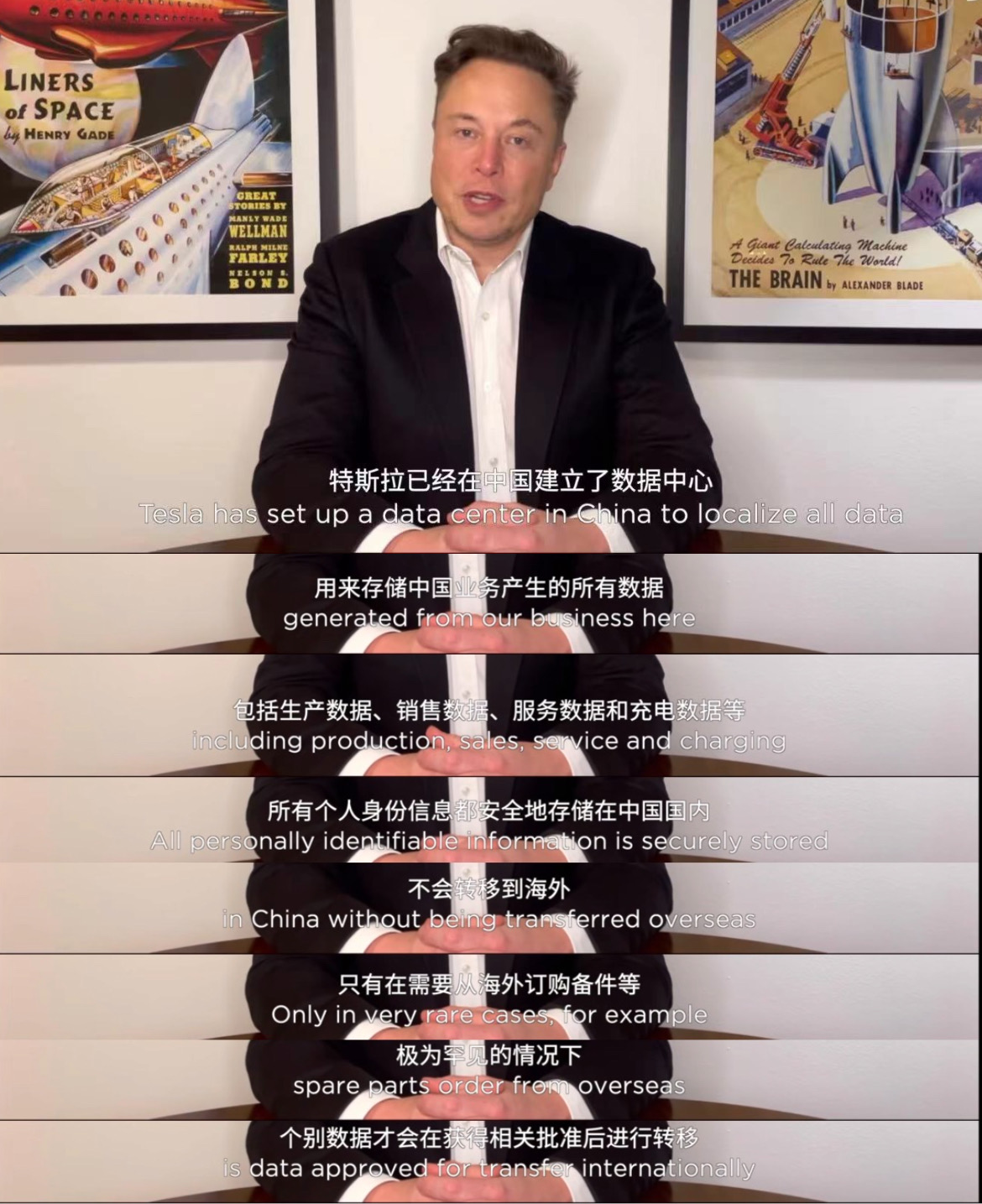
Comment:Due to data security concerns, following Apple’s “iCloud on Guizhou,” Tesla’s “Cloud on Lingang” will also be put into use. Previously, relevant departments in China had drafted a standard for data security management regulations for intelligent connected vehicles, and Tesla’s establishment of a data center in China is a response to this regulation.
ES33 Design Analysis
On September 26th, on the banks of the Huangpu River in the autumn, R Motors provided a detailed explanation of the design secrets behind the ES33. Regarding the concept of “luxury,” Shao Jingfeng believes that there are three levels of core essence: instinct level, behavior level, and reflection level. The highest level for Chinese people is wholeness, which means a complete and harmonious family. Shao Jingfeng transformed this into a specific design, called “muscles hidden in joints, and shining through the skin.”
The ES33’s appearance is very full and also presents a sense of power. In addition, the ES33 is the world’s first mass-produced pure electric vehicle with laser headlights, providing a 40% increase in high beam illumination.
In terms of intelligence, the increasing number of perception sensors in intelligent electric vehicles in recent years also affects the specific design of the vehicle. The newly added camera can breathe indicator lights, and can remind other vehicles of the current status of the vehicle through indicator lights during assisted driving.
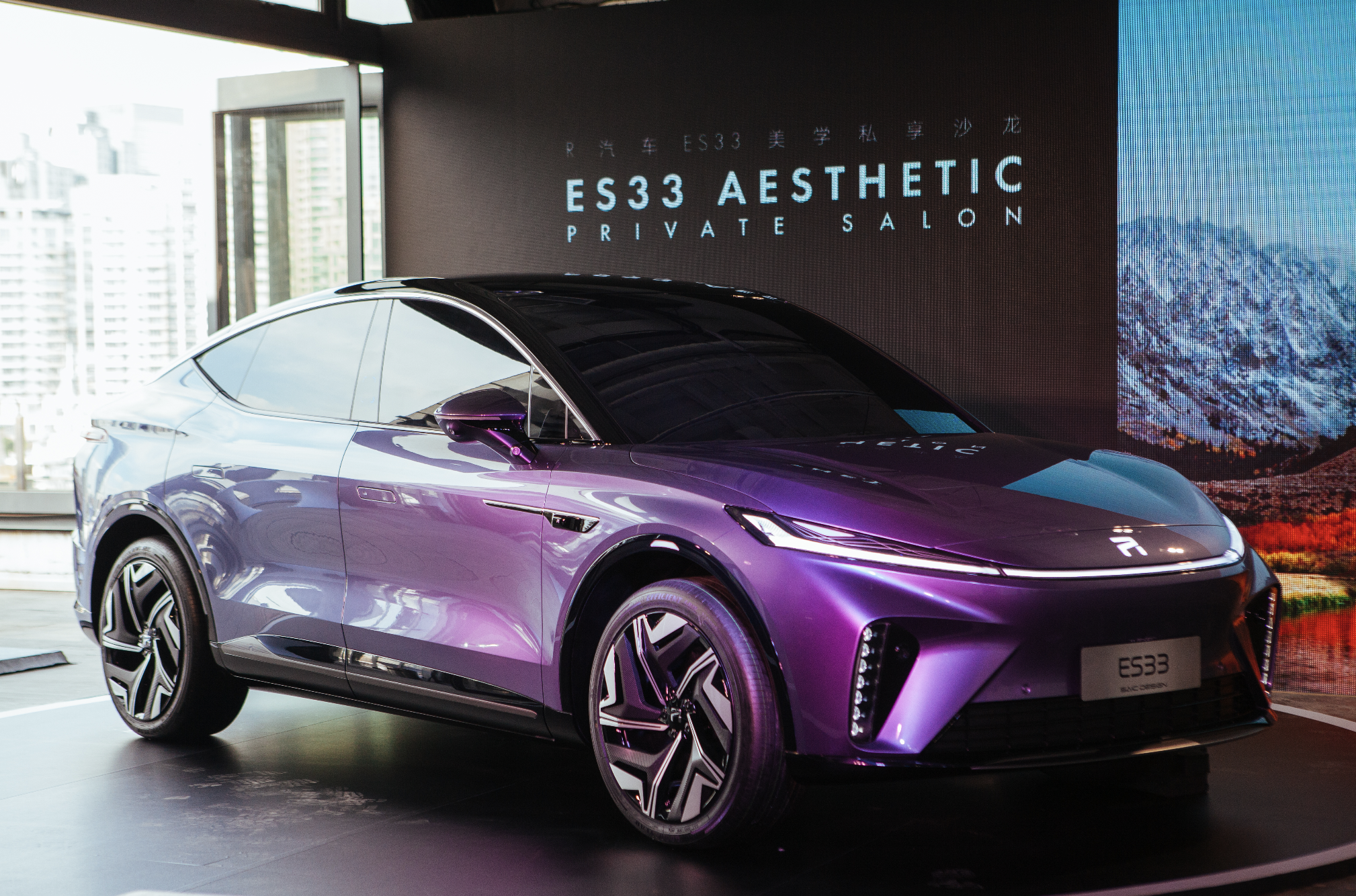
Brief Review:
With a sneak peek from the ES33’s first appearance in August, an interpretation today, and the unveiling of the interior at this year’s Guangzhou Auto Show, SAIC R Motors will gradually unveil the mystery of the ES33.
NIO Releases Three-Element Lithium-Ion Battery
On September 24, NIO officially released a 75 kWh three-element lithium-ion battery.
According to official information, new users can choose the standard range battery pack (75 kWh) or the long-range battery pack (100 kWh) with three-element lithium-ion chemistry. The model equipped with a 75 kWh battery is sold at the same price and BaaS price as the original three-element lithium-ion 70 kWh battery model. This essentially means the discontinuation of the 70 kWh three-element lithium-ion battery, but it will still serve as a “standard range battery pack” and continue to operate in swap stations.
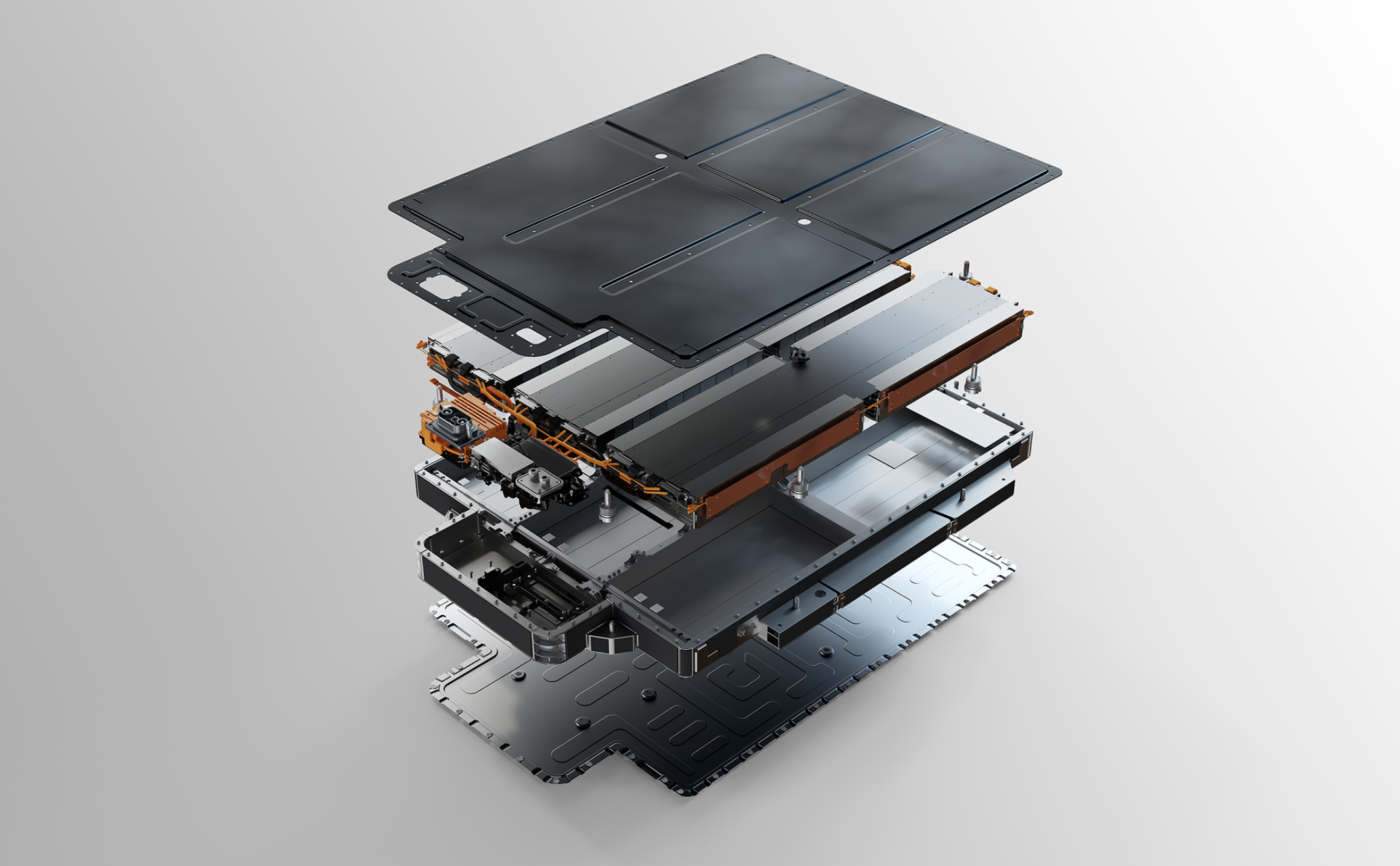
Brief Review:After switching to a ternary iron-lithium battery, the capacity of the battery increased by 5 kWh, resulting in an increase of 30-35 km in range. Although this improvement may not seem very obvious, it is actually the first ternary iron-lithium battery pack on the market. In order to ensure the low-temperature performance of the mixed battery, NIO used the waste heat from the ternary lithium batteries in the battery pack for radiation heat compensation. Compared with previous products, the new 75 kWh battery pack increased the temperature uniformity by 60% and the minimum battery temperature by 40% in 12 hours of extremely cold environment.
NIO’s 75 kWh battery pack with CTP technology simplifies manufacturing and assembly by 10%, increases volume utilization by 5%, and increases energy density by 14% to achieve 142 Wh/kg. As a battery pack mainly composed of lithium iron phosphate, it only increases by about 15 kg in weight, and does not require re-specification of the suspension tuning.
This self-developed technology is not only NIO’s pursuit as a user enterprise, but also an important barrier for a leading new force to maintain competitiveness. The winter performance of ternary iron-lithium batteries is also worth looking forward to.
In August, the ID. series delivered more than 7,000 vehicles, which is still recognized by consumers. After the ID.3 is launched, the product line will be further expanded and the monthly data can continue to increase.
On September 24th, NIO announced the latest drag coefficient of ET7, its first sedan model, is 0.208, which is around 10% lower than the 0.23 announced on NIO Day in January this year.The data shows that the drag coefficient of NIO ET7 is only second to Mercedes-Benz EQS, and tied with Tesla Model S Plaid, making it the third in the world among mass-produced cars. Three weeks ago, IM L7, which has a certified drag coefficient of 0.21 by China Automotive Technology and Research Center, came in second place among domestic cars with only a 1% difference, and Guangqi Aion S Plus ranked third. The presence of three Chinese brand cars on the list demonstrates their pursuit and technical strength in aerodynamics, which has reached the world-class level.
To ensure the smooth battery swap process, the body structure of NIO needs to be stronger than that of other EVs to reduce distortion and deformation. Combined with the space occupied by the battery during swapping, ET7 is noticeably heavier and more solid in appearance compared to similar EVs. In this situation, achieving a drag coefficient of 0.208 is incredibly difficult. Low drag coefficient is critical to the energy efficiency and high-speed power consumption of EVs, as it has a significant impact on their driving range.
Samsung will produce the Tesla HW 4.0 chips on behalf of Tesla, according to an article in the Korean Economy Daily on September 23. The HW 4.0 chips will be manufactured at Samsung’s Hwaseong factory as early as the fourth quarter of this year. The HW 3.0 was also produced by Samsung.
Commentary: There have been rumors that Tesla will work with both Samsung and TSMC in the production of HW 4.0 chips. However, it appears that Samsung has won the contract. Many people are wondering why Tesla is using 7nm chips instead of more advanced 5nm chips for HW 4.0. An insider stated that this is mainly due to better stability concerns. At Tesla’s AI Day, Elon Musk stated that HW 4.0 (also known as FSD Computer 2) will be launched with Cybertruck in 2022.
Li Auto lowered Q3 delivery expectations from 25,000 to 26,000 vehicles to 24,500 vehicles due to the delayed resumption of production at STMicroelectronics’ Malaysian factory, which limited the supply of the fifth-generation millimeter-wave radar chip on the 2021 Li ONE.
Commentary:According to the delivery volume of the Ideal ONE in the past two months of July and August and the quarterly delivery guidance of 24,500, it can be inferred that the delivery volume of Ideal ONE in September should be around 6,500 vehicles. Previously, Ideal expected to achieve monthly sales of over ten thousand in September at the Q2 2021 financial report conference.
This article is a translation by ChatGPT of a Chinese report from 42HOW. If you have any questions about it, please email bd@42how.com.
